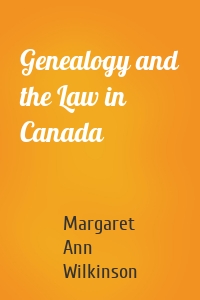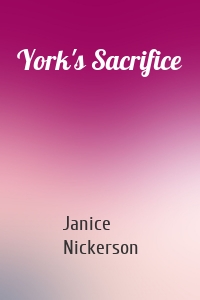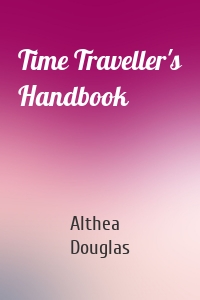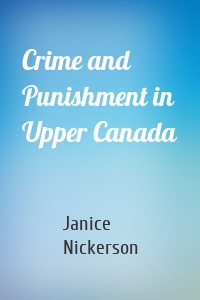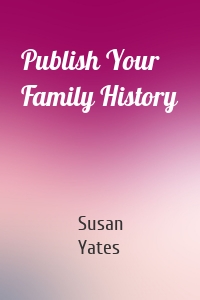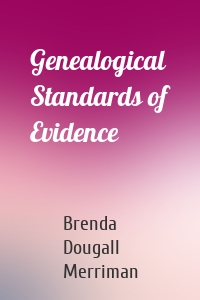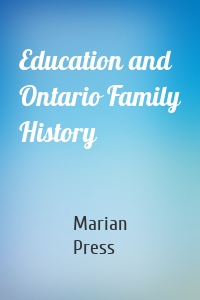Серия "Genealogist's Reference Shelf"
11 кн.Скачать лучшие книги серии Genealogist's Reference Shelf - автор Margaret Ann Wilkinson в формате fb2 или читать онлайн, бесплатно и без регистрации. Читаемые, полные версии книг, без сокращений - на сайте Knigism.online. Скачать книги полностью в количестве 11 шт.
Genealogy and the Law in Canada
Digital records and broad access to the Internet have made it easier for genealogists to gather relevant information from distant sources and to share the information they have gathered. The law, however, remains tied to particular geographic locations. This book discusses how specific laws – access to information, personal data protection, libel, copyright, and regulation of cemeteries – apply to anyone involved in genealogical research in Canada.
| Автор | Margaret Ann Wilkinson |
Researching Your Irish Ancestors at...
A one-stop guide for people seeking information about their ancestors in Ireland. This book will help all those, no matter where they live, who are searching for ancestors in Ireland. David R. Elliott has taken eight research trips to Ireland on behalf of his clients and has worked in most archival repositories in the Republic of Ireland and Northern Ireland. Dr. Elliott gives clues to finding your ancestral county, then the parish and townland within the county. He explains how Irish archival...
| Автор | David R. Elliott |
Inheritance in Ontario
A guide to researching your family’s inheritance history in Ontario. Whether your ancestor left hundreds of acres of land, money, or a few modest belongings, the records created when those legacies were distributed can provide valuable clues to family connections, relationships, and just how your ancestors lived. Inheritance in Ontario will help you determine whether your relative’s will was proved in the Court of Probate, surrogate courts, or another court, and navigate the finding aids to...
| Автор | Jane E. MacNamara |
York's Sacrifice
Not only professional soldiers but also citizens serving as militiamen participated in the War of 1812. The militia’s contribution to the War of 1812 is not well understood. Even now, 200 years later, we don’t know how many Upper Canadian militia men died defending their home. York’s Sacrifice profiles 39 men who lost their lives during the war. They include 19 residents of the Town of York, five residents of York County, and 11 residents of Halton, Peel, and Wentworth Counties. Where...
| Автор | Janice Nickerson |
Time Traveller's Handbook
Do you know how long it took to sail across the Atlantic Ocean? Was it faster from east to west or west to east? Imagine sailing to India, a five-month trip around the Cape of Good Hope! No wonder late Victorians valued the steamship and the Suez Canal. What difference did the inventions of the telephone or steam engine make to our ancestors lives? Do you know what a rod or a chain is and what they measured? Time Travellers Handbook considers documents and how to look at papers and artifacts...
| Автор | Althea Douglas |
Crime and Punishment in Upper Canad...
Crime and Punishment in Upper Canada provides genealogists and social historians with context and tools to understand the criminal justice system and locate sources on criminal activity and its consequences for the Upper Canada period (1791–1841) of Ontario’s history. Illustrative examples further aid researchers in this era of the province’s past, which is notoriously difficult to investigate due to paucity of records and indexes. An entertaining, educational read, the book features chapters...
| Автор | Janice Nickerson |
A Call to the Colours
Beginning in Canadas earliest days, our ancestors were required to perform some form of military service, often as militia. The discovery that an ancestor served during one of the major conflicts in our history is exciting. When you find a family name on a Loyalist muster roll, a Canada General Service Medal with an ancestors name engraved on it, a set of First World War attestation papers, or a box of Second World War medals, you realize that one of your ancestors faced challenging events...
| Автор | Kenneth Cox |
Conserving, Preserving, and Restori...
Artifacts, whether found in museums, our community, or our homes, offer glimpses into the past. Be they documents, photographs, books, or clothing, as custodians of our history, we're faced with how to maintain these items. Professional conservator Kennis Kim tells us how. Topics discussed include: creating an accession list; the nature of conservation, restoration, and preservation; deciding on display, storage, or using the artifact; common threats such as light, humidity, insects, and...
| Автор | Kennis Kim |
Publish Your Family History
Many people want to write a family history, but few ever take on the job of publishing one. If you’ve done the research, and you want to make a book from it, then Publish Your Family History is for you. It will tell you all the fundamentals of book production, together with the important details that distinguish a home-published book from a homemade one. You’ll learn: how to get your manuscript ready for production; design ideas for the pages and the cover; methods of making pages with or...
| Автор | Susan Yates |
Genealogical Standards of Evidence
Genealogical evidence is the information that allows us to identify an individual, an event in his or her life, or the relationship between individuals. In such a process, we often hear or use words such as evidence, proof, or documentation. Brenda Dougall Merriman takes readers through the genealogical process of research and identification, along the way examining how the genealogical community has developed standards of evidence and documentation, what those standards are, and how they can be...
| Автор | Brenda Dougall Merriman |
Education and Ontario Family Histor...
Many family researchers with Ontario roots discover they have ancestors who were teachers. Those with no teachers in the family may have ancestors who were part of the Ontario education system as students. Today there are numerous varied resources available to find information on teachers, pupils, schools, textbooks, and curricula in historical Ontario. Education and Ontario Family History outlines the resources available for education from about 1785 to the early twentieth century, not only...
| Автор | Marian Press |


